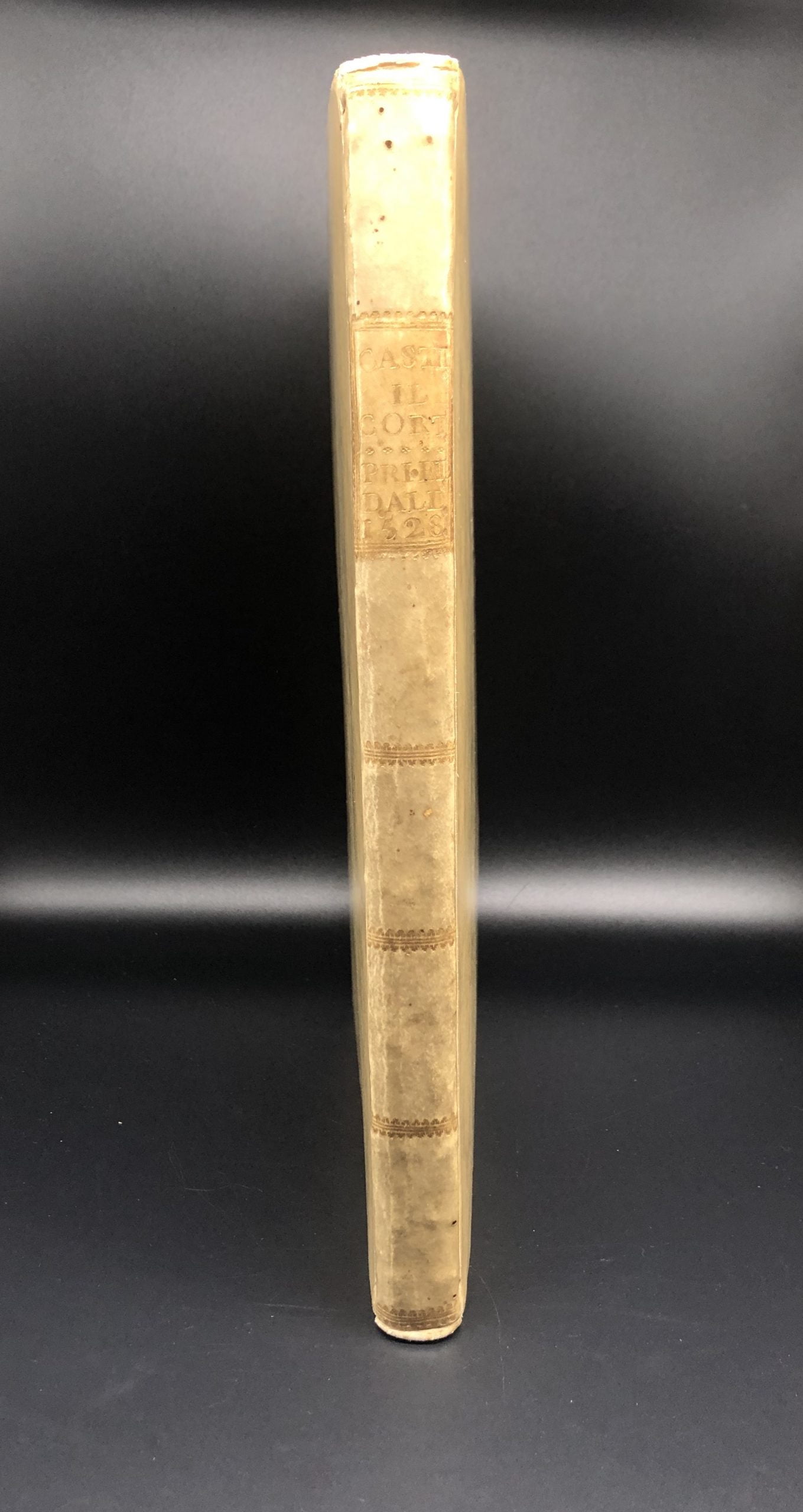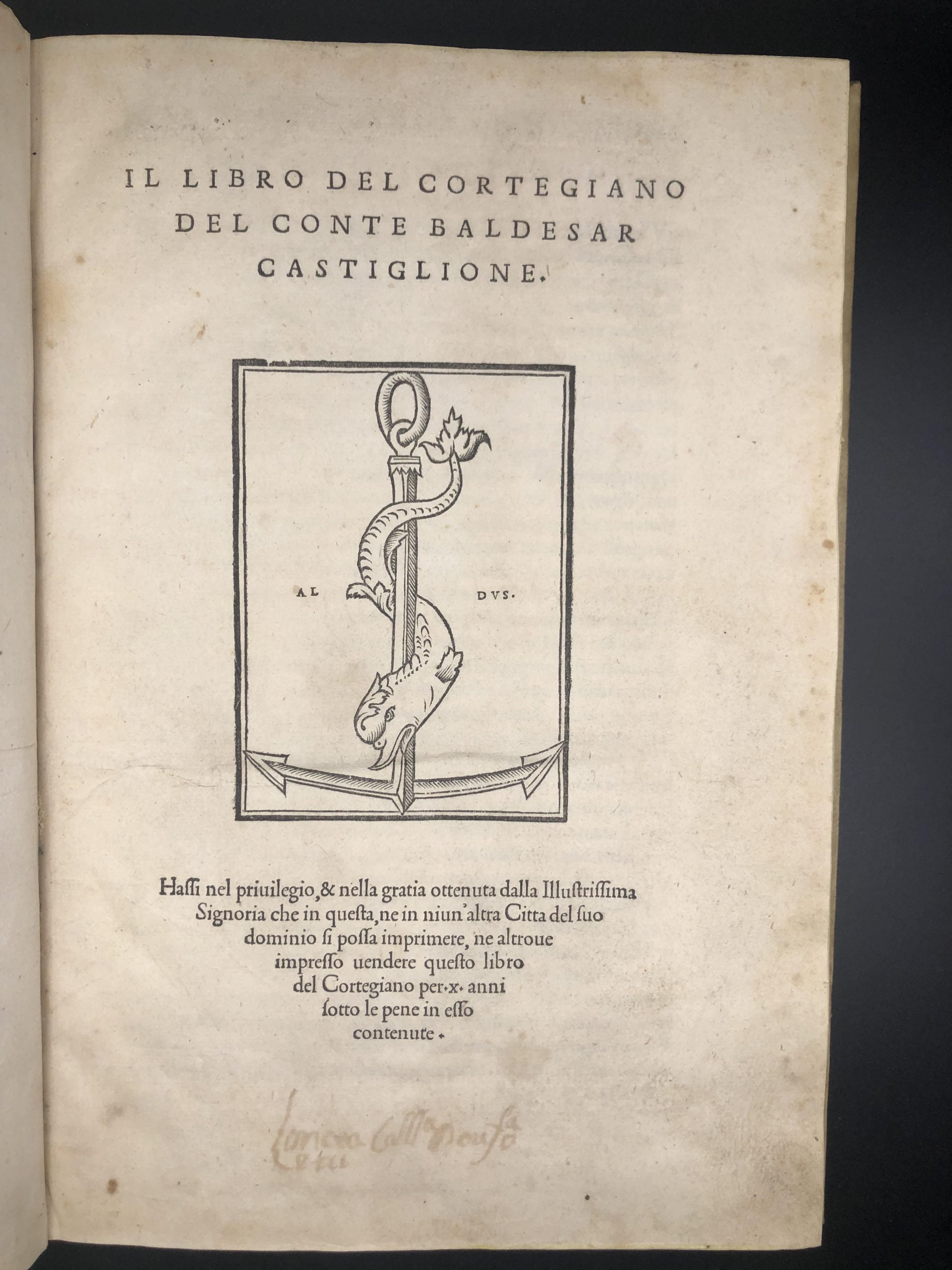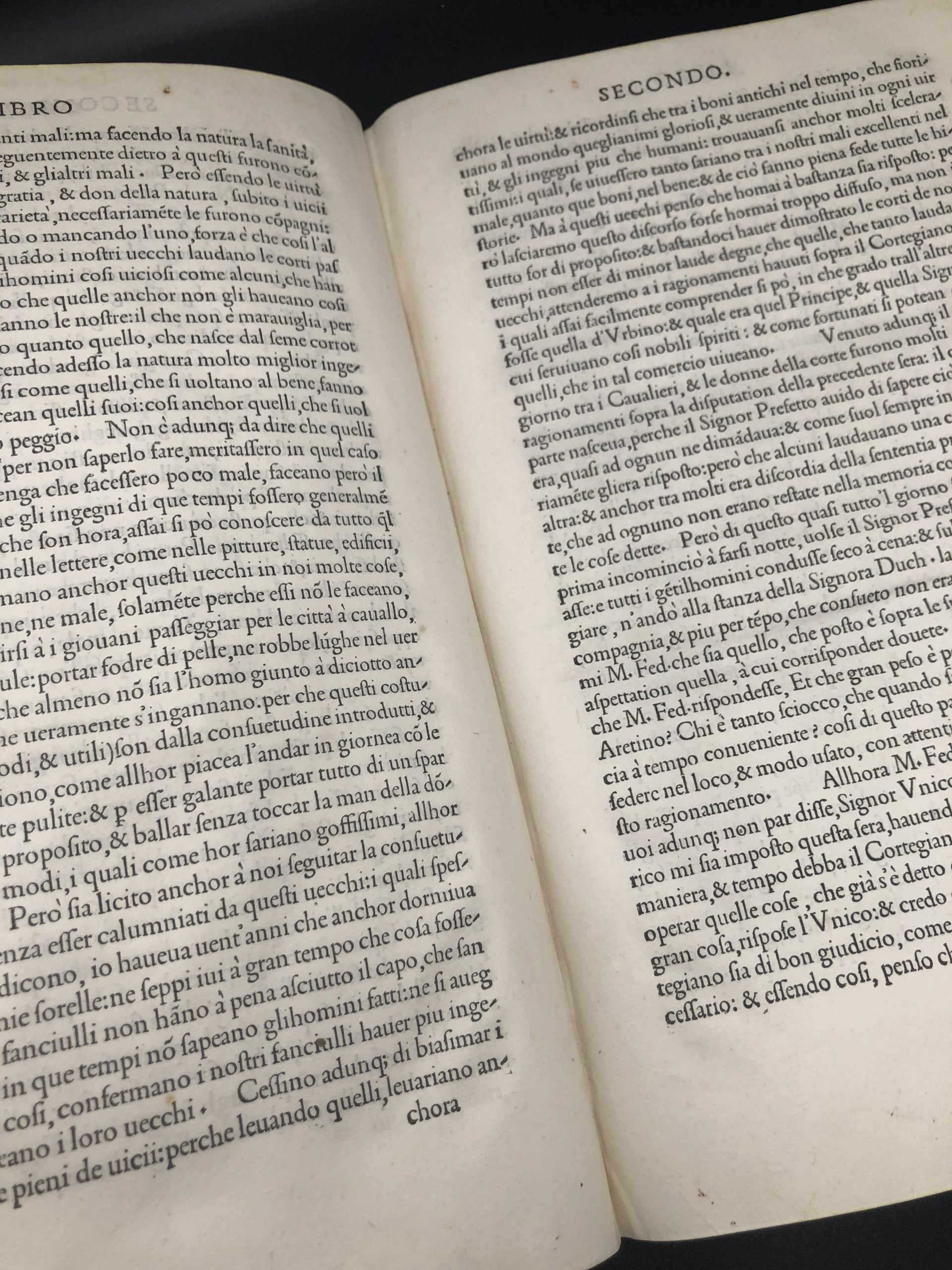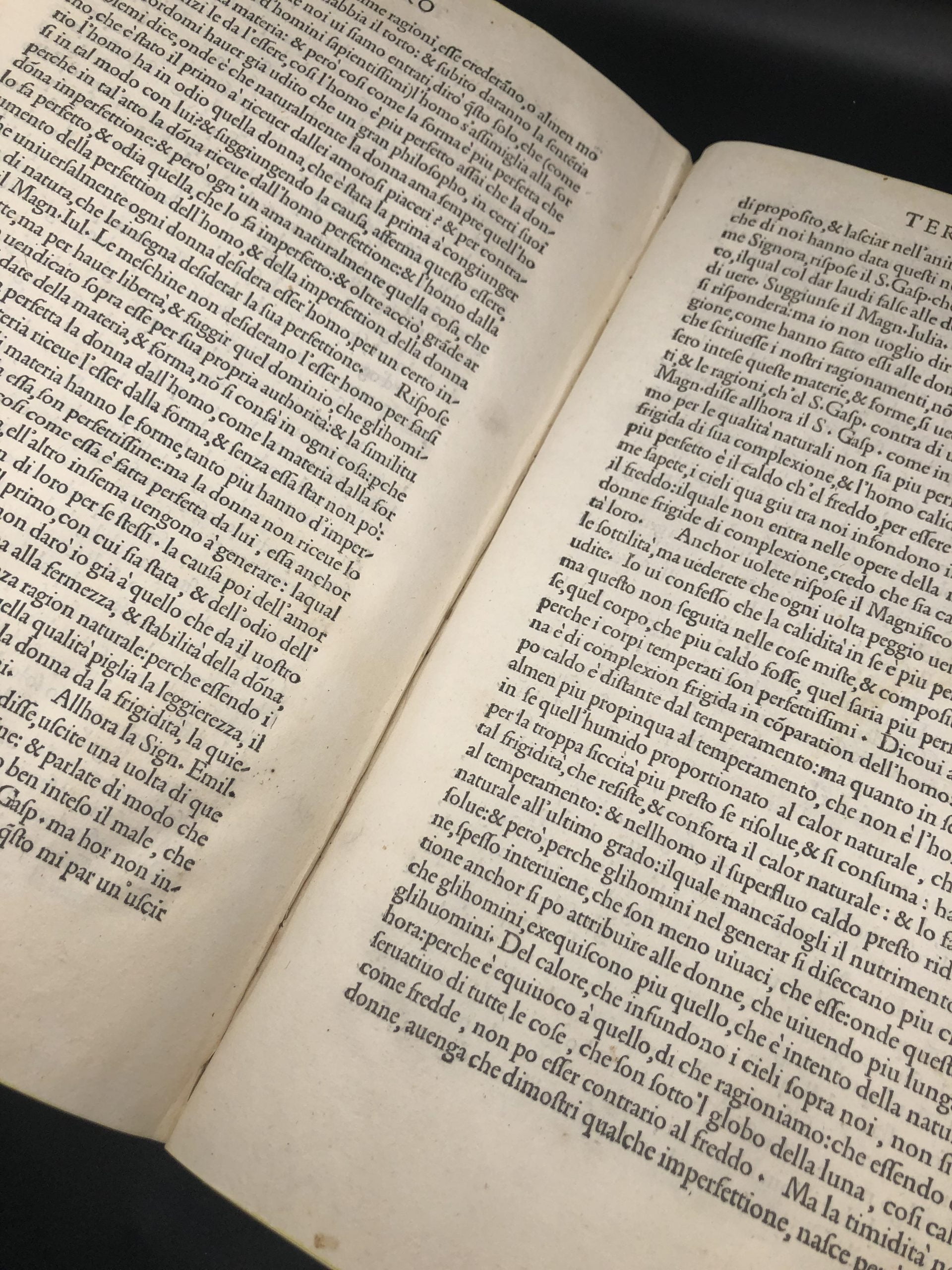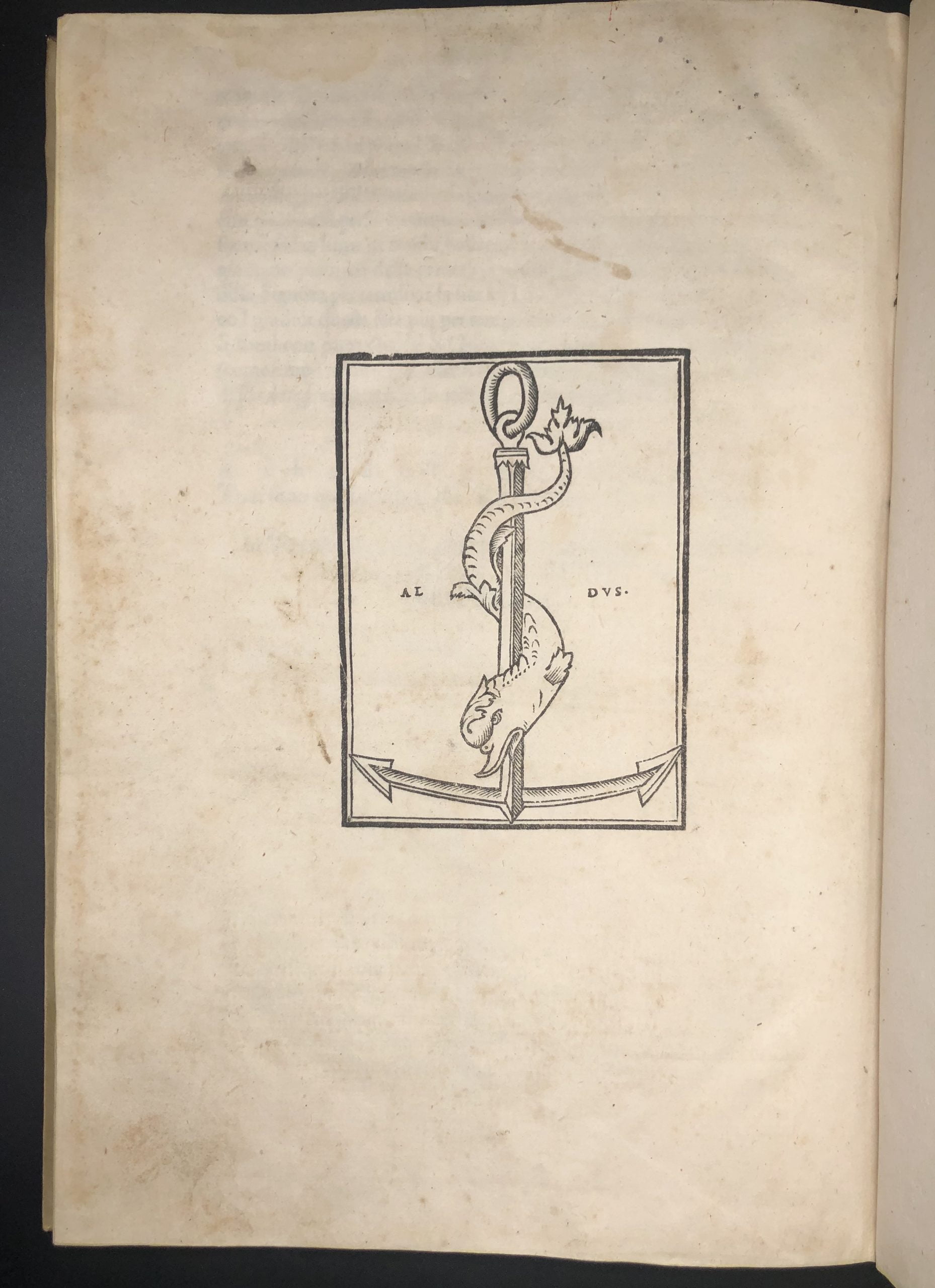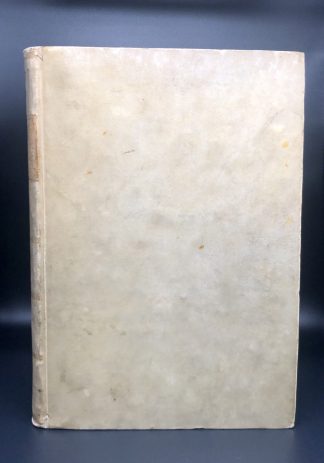CASTIGLIONE, Baldassarre
PRINTING AND THE MIND OF MAN
Il libro del cortegiano
Venice, in aedibus haer. Aldo I Manuzio & Andrea I Torresano, 1528£32,500.00
FIRST EDITION. Folio. 122 unnumbered ff., *4 a-o8 p6. Aldine device to t-p and verso of last. T-p and first couple of ll. a little soiled at lower outer corner, thumb marks to few others, faint splash to *2, small spot to n8 and o1, very light water stain to upper margin of last two gatherings. A very good, fresh copy, in c1700 vellum over boards, spine gilt lettered and gilt ruled in six compartments. C19 armorial bookplate to front pastedown, faded early inscription ‘L(?) Cam[ill]a Doufau’ to lower blank margin of t-p.
A very good, fresh copy of the first edition of a work which shaped and changed the culture of the European upper classes in the Renaissance. This edition is the ‘first and most sought after’ (Brunet I, 1628), ‘handsome and rare’ (Renouard 105:3). Of noble origins, Baldassarre Castiglione (1478-1529) studied ‘literae humaniores’ at Milan and was at the service of the Sforza and Gonzaga before moving to the court of the Duke of Urbino. He spent the last few years of his life as Apostolic nuncio in Spain, where he died of the plague in 1529. It was the year before his death that the first edition of ‘Il libro del Cortegiano’ appeared in print; its success was foreseen by Aldus who obtained a 10-year monopoly. The work celebrates the characteristics of the ideal aristocrat and ‘has remained the perfect definition of a gentleman ever since’ (PMM 59). It was inspired by Castiglione’s time at Urbino and his social interaction with influential personalities including courtiers, aristocrats and literati, by then mostly deceased. It was thus intended also as a celebration of their achievements since, as Castiglione said in the preface, the ‘loss of so many friends’ had left him in a ‘painful solitude’. In this dialogue, refined courtiers discuss the virtues (e.g., honesty, magnanimity and good manners) and social skills (e.g., foreign language proficiency, dancing and fencing) a perfect courtier should have, often inspired by classical antiquity, as well as the ‘sprezzatura’—a fundamental nonchalance or ‘carelessness’ guiding his every action. The resulting idea of ‘self-fashioning’, or the crafting of a public persona following received standards, influenced, thanks to numerous translations, the behaviour of the European aristocracy for decades, especially in England where C16 literature and drama were imbued with the Italian ideals of the ‘cortegiano’.
USTC 819485; BM STC It., p. 156; Brunet I, 1628: ‘la première et la plus recherchée’; Renouard 105:3: ‘belle et rare’; Ahmanson-Murphy 252; PMM 59.In stock



